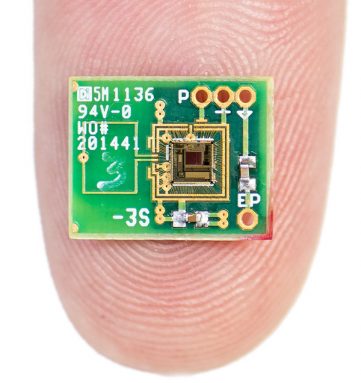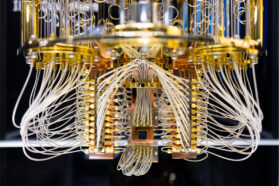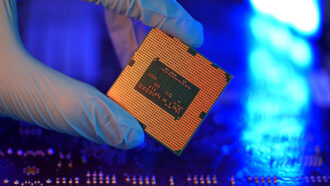Your head’s battery
Fluids in the inner ear can actually power an electronic device, such as an implant
By Sid Perkins

A natural powerhouse in the ear of guinea pigs can run a tiny electronic device, researchers show. Human ears contain that same structure, which operates like a battery. Doctors might one day use this system to power implants. Some might monitor an individual’s blood. Others could dispense medicines.
Deep within the ear of all mammals is a spiral-shaped structure called a cochlea (KOKE lee ah). It contains two storage regions, each filled with a different liquid. One fluid contains dissolved minerals, such as potassium, in concentrations close to those found in blood. The other fluid contains a higher proportion of potassium.
A thin membrane separates the two chambers. Cells in that membrane continually pump potassium from one chamber into the other. The difference in potassium concentrations between the chambers creates a small voltage difference. Voltage is a measure of how much energy it takes to move charged particles between two points, or how much energy can be extracted from those moving particles. In the cochlea, this voltage difference normally drives signals that carry sound information along a nerve going to the brain.
Importantly, there is always a voltage difference between the cochlea’s fluid chambers. So it’s like a battery that never loses its charge, explains Anantha Chandrakasan. He’s an electrical engineer at the Massachusetts Institute of Technology (MIT).
He and his coworkers designed a tiny device to measure changes in the strength of the ear’s natural battery. Periodically, the device would then wirelessly transmit the data it had collected.
That battery had to power those transmissions. But the ear’s natural battery is far less powerful than those used to run watches or calculators. So circuits in this device had to be very efficient.
To tap into the ear’s natural battery, the researchers attached electrodes. One penetrated each chamber of the cochlea. These electrodes had to be very small and provide little resistance to the flow of electricity.
Konstantina Stankovic, an ear surgeon at Harvard Medical School, led a team that implanted those electrodes. Wires connected them to the new device — a computer chip similar to those found in many types of electronics. That chip was small enough to fit on a fingertip. For these early tests, the device itself remained outside the guinea pig’s ear.
The tiny device had to collect energy from the ear’s battery and then store it until there was enough power to transmit data. The researchers provided the test device with enough starting energy to operate only about 6 minutes. In fact, the device operated for up to 5 straight hours. That shows the device succeeded in pulling power from the ear’s natural battery. The device derived enough power to send data every 40 seconds to 6 minutes. The researchers described their findings online November 11 in Nature Biotechnology.
Overall, the cochlea’s battery provided a little more than 1 nanowatt of power. That’s less than one-billionth as much as would be needed to run a faint nightlight. But the device didn’t interfere with hearing.
Future versions could be implanted inside the body near the ear, Chandrakasan says. There it might do things such as monitor chemicals in the blood — blood sugar or cholesterol, for example. Alternatively, a tiny ear-powered device might occasionally release small amounts of some medicine into the bloodstream or into tissues near the ear. For such tasks, researchers will need to improve the electrodes and device’s circuitry, Chandrakasan says.
Researchers are just beginning to find ways to capture, store and use the body’s energy in unusual ways. For example, scientists have designed backpacks that can harvest the energy of a person walking to power a variety of devices. The new ear battery testing “shows you can do neat stuff,” says Gene Frantz. He’s an electrical engineer at Texas Instruments in Dallas.
But before researchers design implants with complicated circuits to perform many tasks, Frantz says they should ask themselves: “How do I build a circuit that does only what’s necessary?” This, he says, might allow scientists to design small devices that won’t need more power than the tiny amounts of energy that an ear’s microbattery can provide.
Power Words:
auditory nerve The nerve that carries electrical signals that represent sound from the ear to the brain.
battery A device that can convert chemical energy into electrical energy.
cochlea A spiral-shaped structure in the inner ear of humans and other mammals. The natural battery in the mammalian inner ear provides power to drive signals from the ear to the brain. Those signals travel along the auditory nerve.
current The flow of electrical charges through a wire or other electrical conductor.
electrical engineer A researcher who uses the principles of electricity, electronics and electromagnetism to design or analyze devices that transmit or use electrical power. Examples include computers, radios and electrical circuits.
implant A device manufactured to replace a missing biological structure, to support a damaged biological structure, or to enhance an existing biological structure. Examples include artificial hips and knees, pacemakers, and the insulin pumps used to treat diabetes.
power The energy used to run machines or devices, and is typically measured in watts.
voltage The difference in electrical potential between one point and another — say, for instance, one end of a battery and the other. Electrical potential measures the amount of energy needed to move a charged particle from one spot to another.







